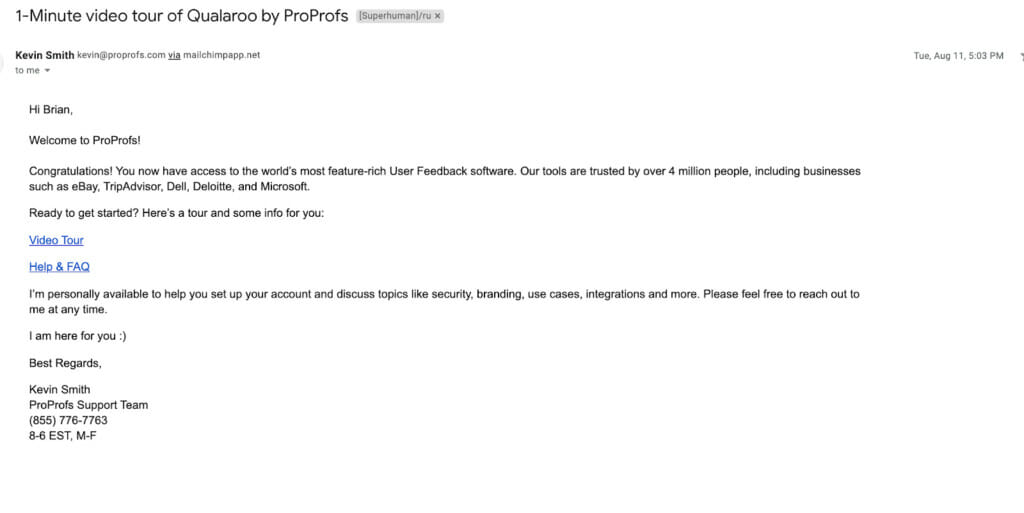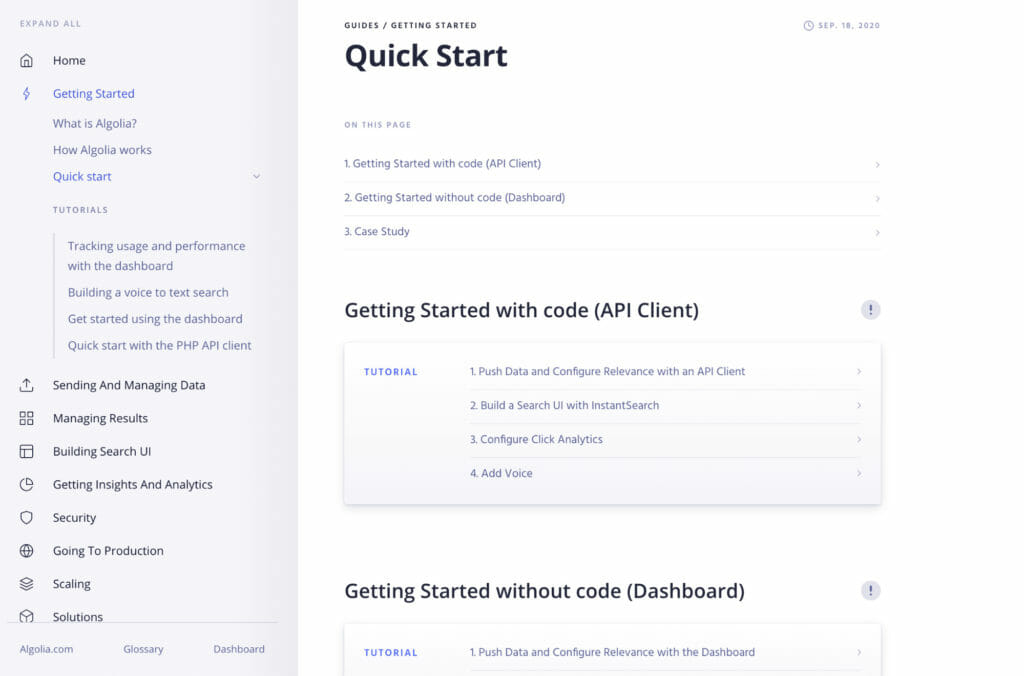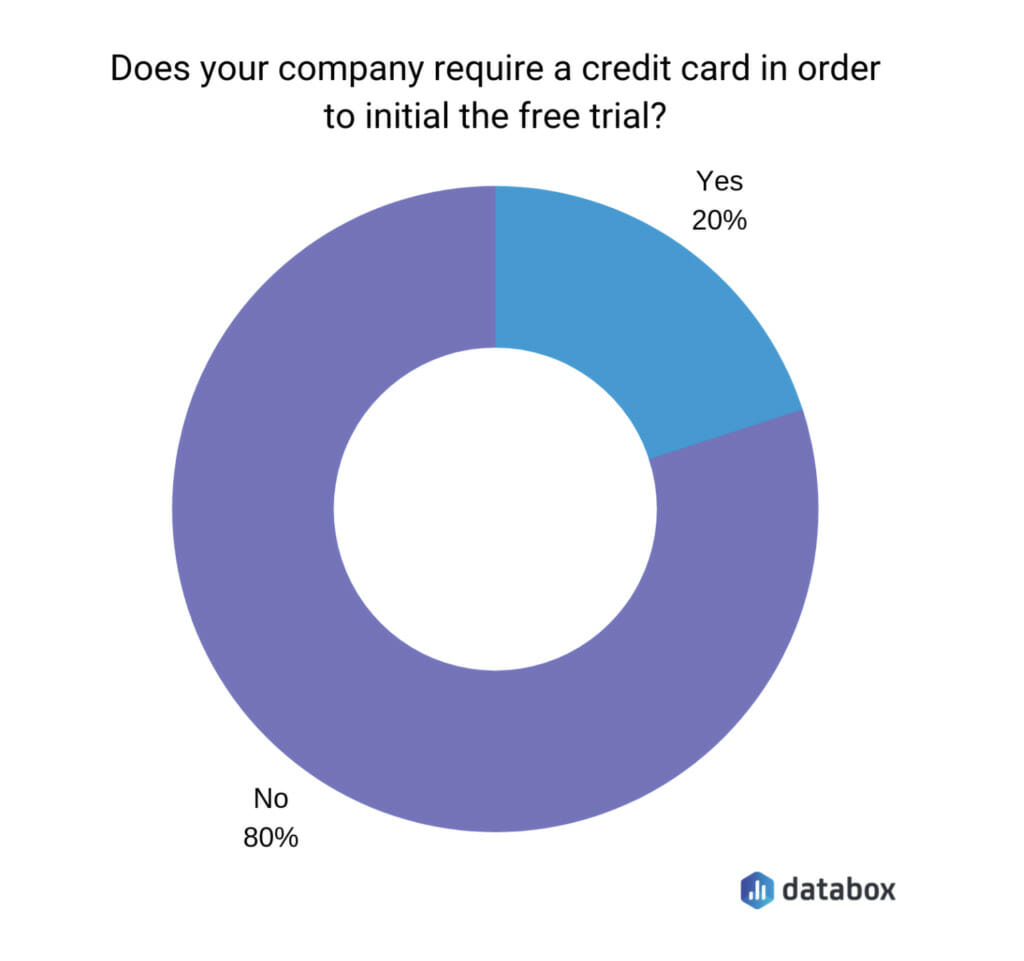Nearly 75% of SaaS companies offer a free trial. Trials give potential customers a taste of life with your product at minimal risk. They also give you the opportunity to earn their business.
But while free trials are commonplace, how long should yours be? Should you require a credit card? How can you get more users to purchase?
There is no magic formula. You have to identify priorities for optimization based on near-term and long-term goals, then test what works for your site and product.
Below, we offer nine starting points for getting more trial users across the finish line. We also show you ways to optimize them based on what leading SaaS companies are doing right now.
Table of contents
- 9 ways to optimize your SaaS trial
- 1. Make a strong first impression after sign-up.
- 2. Keep your emails—especially subject lines and preheader text—engaging.
- 3. Find out when and where strategic, personalized onboarding makes sense.
- 4. For complex products, use onboarding to educate users.
- 5. Engage the unengaged.
- 6. Test to find the perfect trial length.
- 7. Use value-based pricing.
- 8. Decide whether requiring a credit card makes sense.
- 9. Have a plan for when your trial ends.
- Conclusion
9 ways to optimize your SaaS trial
1. Make a strong first impression after sign-up.
The moment a user starts their trial (even when still on your sign-up page), design, flow, loading speed—everything is center stage. First impressions matter. A successful user onboarding flow gets trial users to perform tasks that have signaled long-term use in the past.
The first email that users receive should introduce your company and demonstrate the value your product provides. It should be friendly, clear, and establish a narrative of why you’re the best solution.
For example, when you sign up for Zapier, here’s what you receive:
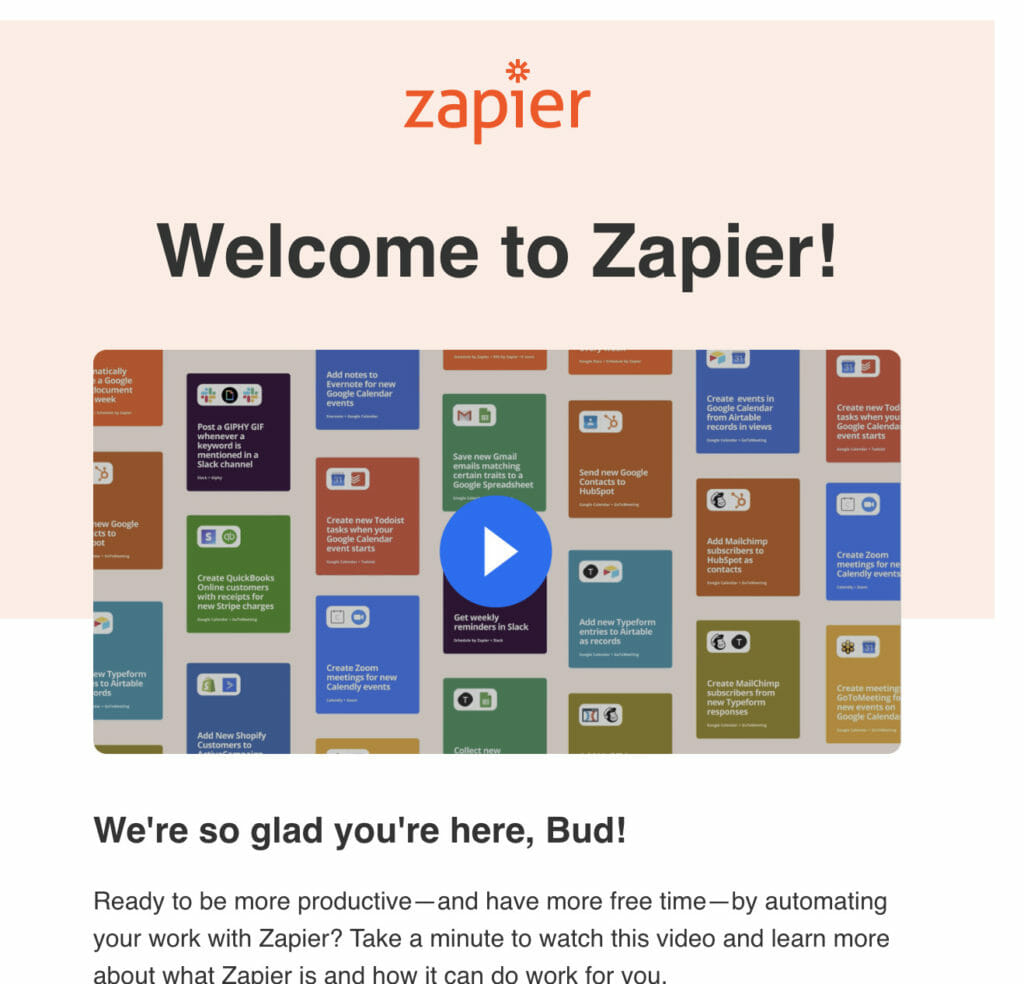
They tell you that they’re excited that you signed up and are clear about the value they provide (“be more productive—and have more free time”).
Zapier’s short video also highlights how their product can deliver that value:
If you’re like us… you’ve spent a lot of time handling repetitive but business critical tasks. No wants to copy and paste data, or upload CSVs, or send the same email to leads every day. But those are the things that keep a business running.
Zapier connects the apps you use every day, and automatically moves information between them, doing that work in the background.
Zapier helps you automate important work.
You don’t have to go the multimedia route to be effective. Qualaroo’s first email is plain text:
The introduction feels personal, authentic, and clarifies what they do and whom they serve. Their four million users and name-drop of established companies offers social proof.
Here are some other considerations for making the most of your first email to trial users:
- Offer a brief overview of what users should expect throughout the trial.

- Highlight your company’s culture and brand with images, GIFs, or design elements to make your email stand out—small things matter.
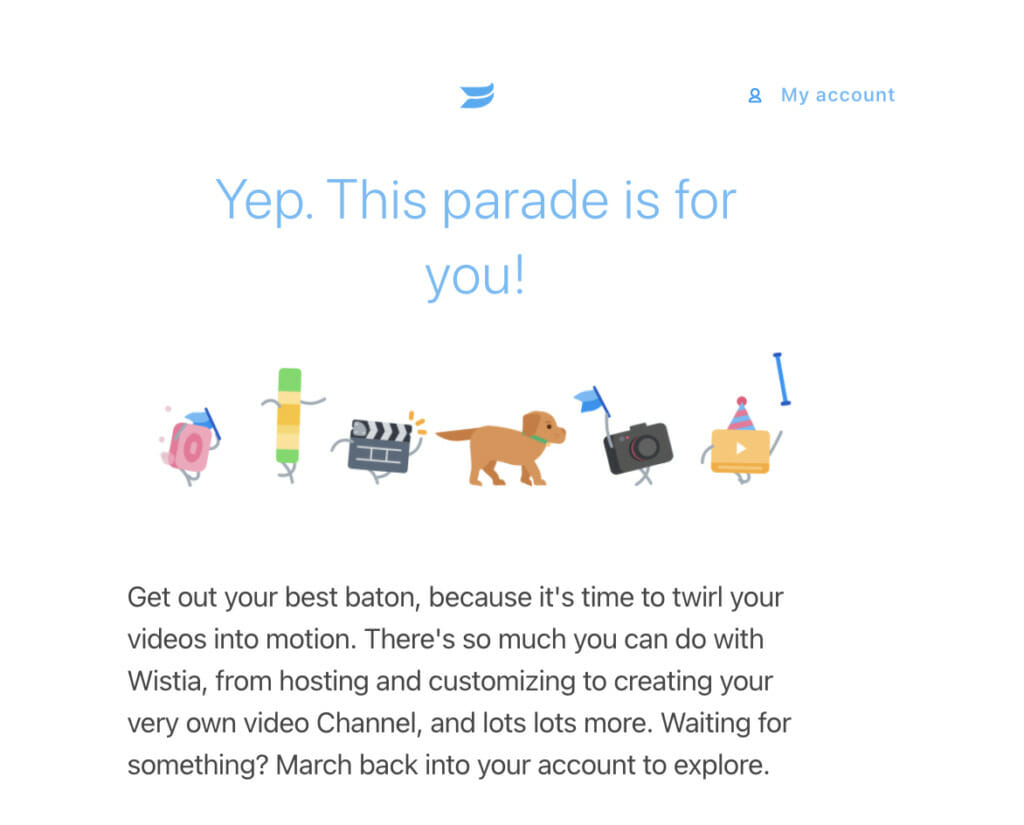
- Keep your email content focused on the trial and helping users get immediate benefits from using your product.

If you have the capacity—for some clients, at least—you can go beyond email. A call from a member of your sales or customer service team can keep you top of mind. BambooHR called me personally within 45 minutes of signing up for a trial.
2. Keep your emails—especially subject lines and preheader text—engaging.
You may send 10–20 emails (or more) during your trial. If users don’t open them, whatever else is inside doesn’t matter. (There are risks, of course, to optimizing for open rates alone.)
According to CoSchedule research, your subject line should be between 40 and 50 characters, which keeps your subject line within the right character limit for viewing on a mobile device.
Here are other ways to increase open rates:
Experiment with different subject lines.
Most email service providers (ESPs) allow you to split test subject lines and send out the winner. Even if your list is small, trying two angles can help you discover which subject lines perform best.
Since emails in the sequence likely will stick around for months (compared to a one-off email), it’s worth spending time to identify subject lines that work best.
Don’t wait until the email body to talk about benefits.
What does your product accomplish? How will it benefit your users? How does it make their life easier?
If you’re not sure about which customer wants, needs, or desires matter most, run surveys or interviews to collect voice-of-customer data.
Zapier makes it clear they help with automation:
LastPass helps you protect your business:
Baremetrics simplifies KPI tracking:
Get specific.
Ask a question about the trial (or your product).
“Need help getting started?” “Not sure where to start? “Struggling to stay organized?” etc.
If you’re offering support, use “I” (not “we”) in the subject line to make it feel more personal.
Make good use of preheader text.
As Joanna Wiebe of Copy Hackers shared via Litmus:
The preheader text is huge as well. It should work with your subject line, but also stand independent from it in case your subject line only does half the job.
That means it should say something that builds on your subject line, or further teases at something from your subject line, or provides a new piece of information like a data point that people will want to open and read about.
The subject line doesn’t stand alone. It’s a matter of testing all the different elements.
3. Find out when and where strategic, personalized onboarding makes sense.
“Personalization” isn’t just getting a first name into an email—nor is about only what you can automate. Take this example from Hubspot:

It was clear that they did some research, noting that I went to the University of Missouri and specifically mentioning football (which is a big deal at the University). Those personal touches can help create a truly customer-centric experience.
Oliver Bridge, of Bonjoro, recently shared their success from offering 1:1 video calls to those who added their credit card during trial.
“Last 3 months (April to July) we have improved our upgrade rate my 307% and reduced by 37.2%
Feels silly we weren’t doing this earlier, seeing as it’s our own tool, but we’d been focusing so much on trial to paid, we forgot about the value.”
The experiment increased trial-to-sign-up numbers and boosted overall team morale: “It had a huge impact on our whole team’s confidence and motivation. We are getting closer to our customers, and finally seeing the light at the end of the tunnel.”
You might not be able to do 1:1 videos for every trial user, but you can segment trial users based on actions they take and determine who might benefit most from human-to-human onboarding. The “right” users for that may include only perfect-fit customers or focus on users who haven’t engaged yet because they need someone to show them around.
4. For complex products, use onboarding to educate users.
Depending on your product’s complexity, much of your trial onboarding may focus on education and sharing resources needed to use your product.
Optimizely, for example, requires a little more hand-holding—so they share multiple resources to walk new users through product setup:

In contrast, a tool like Grammarly, once installed, fits immediately into your workflow. No education needed.

If integrations are critical to your product, highlight how to integrate with other popular software in users’ tech stack.
LastPass, often used by teams and companies, highlights how to integrate with directories:
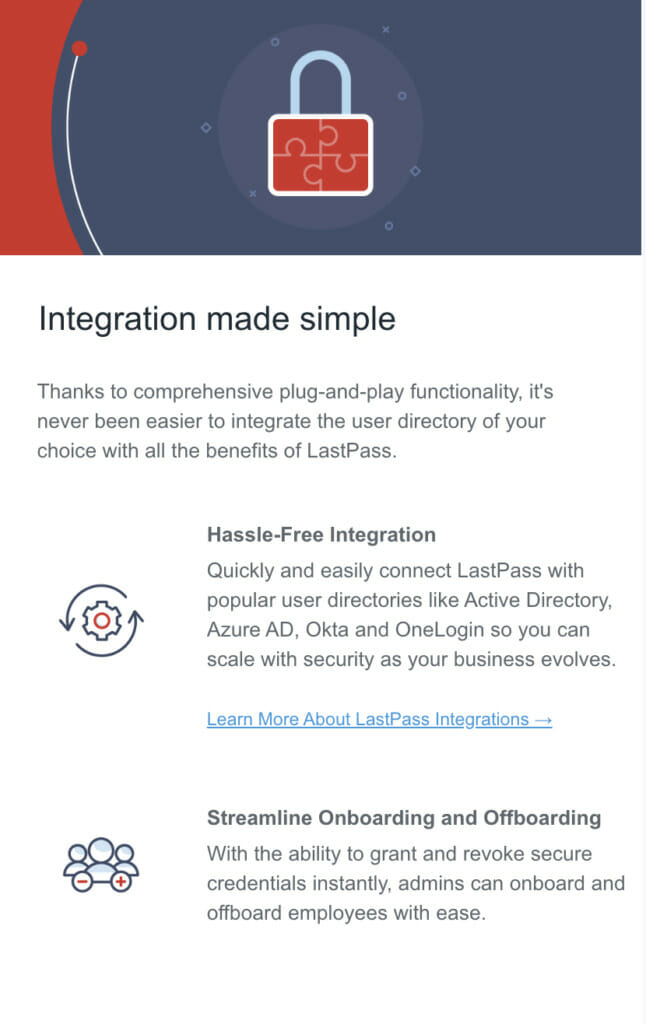
Also consider:
- Linking to important documentation and FAQs.
- Creating and sharing content—via email or on dedicated, easy-to-find pages—about some of your most popular integrations.
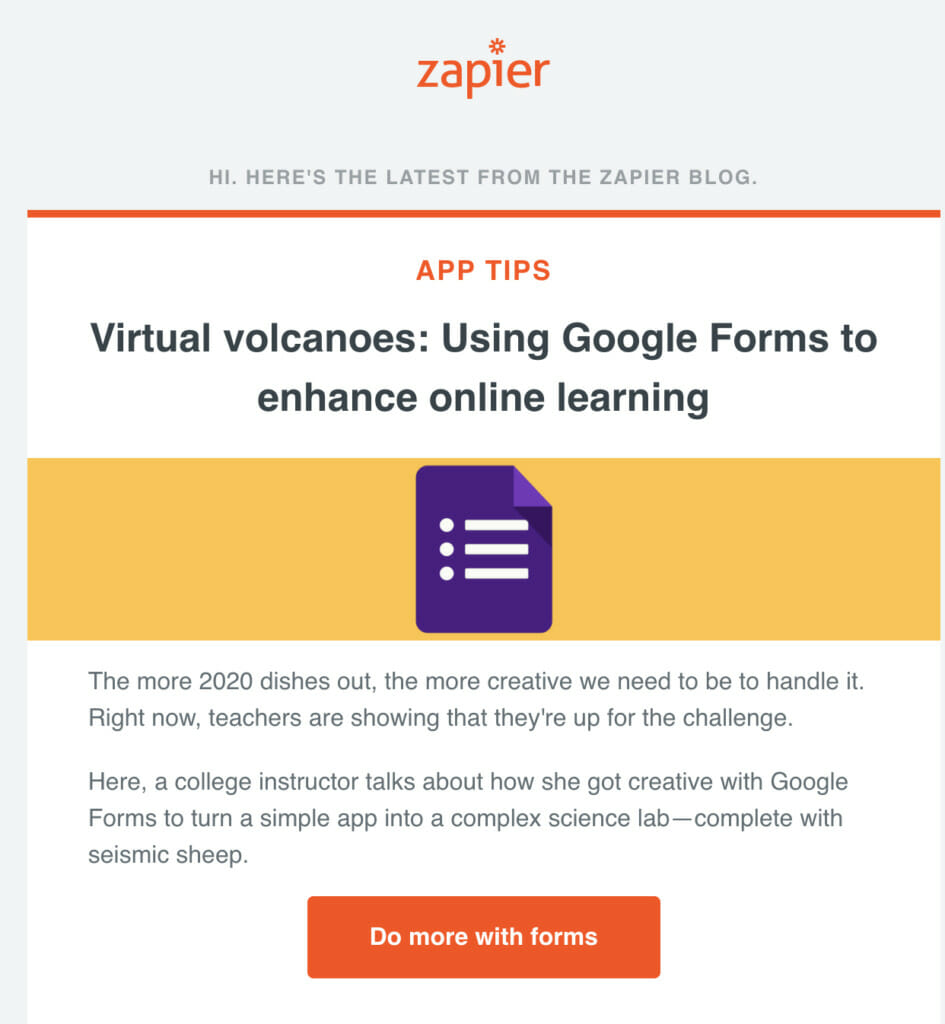
5. Engage the unengaged.
Some of your trial users will stop engaging with your product. Having a strategy in place beforehand can help you re-engage those who might still be interested.
Remember—users are busy! Not logging into your product doesn’t mean they aren’t open to purchase at the end of their trial. A little nudge in the right direction goes a long way.
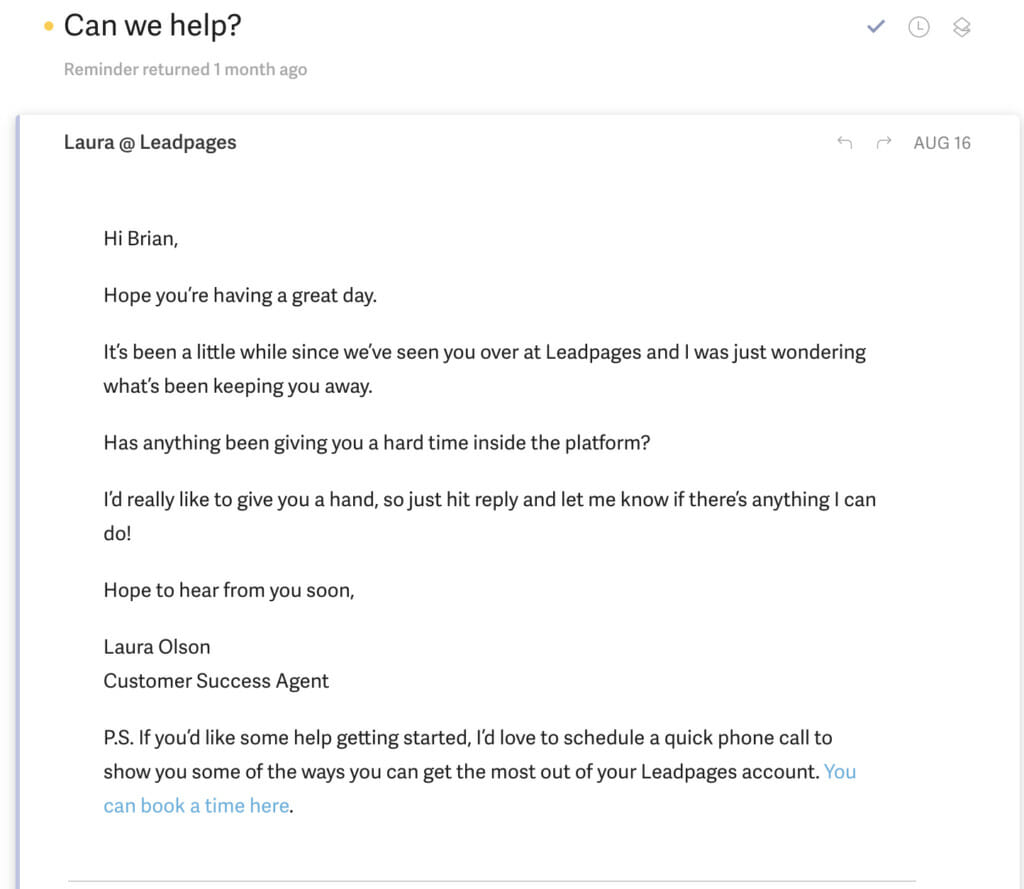
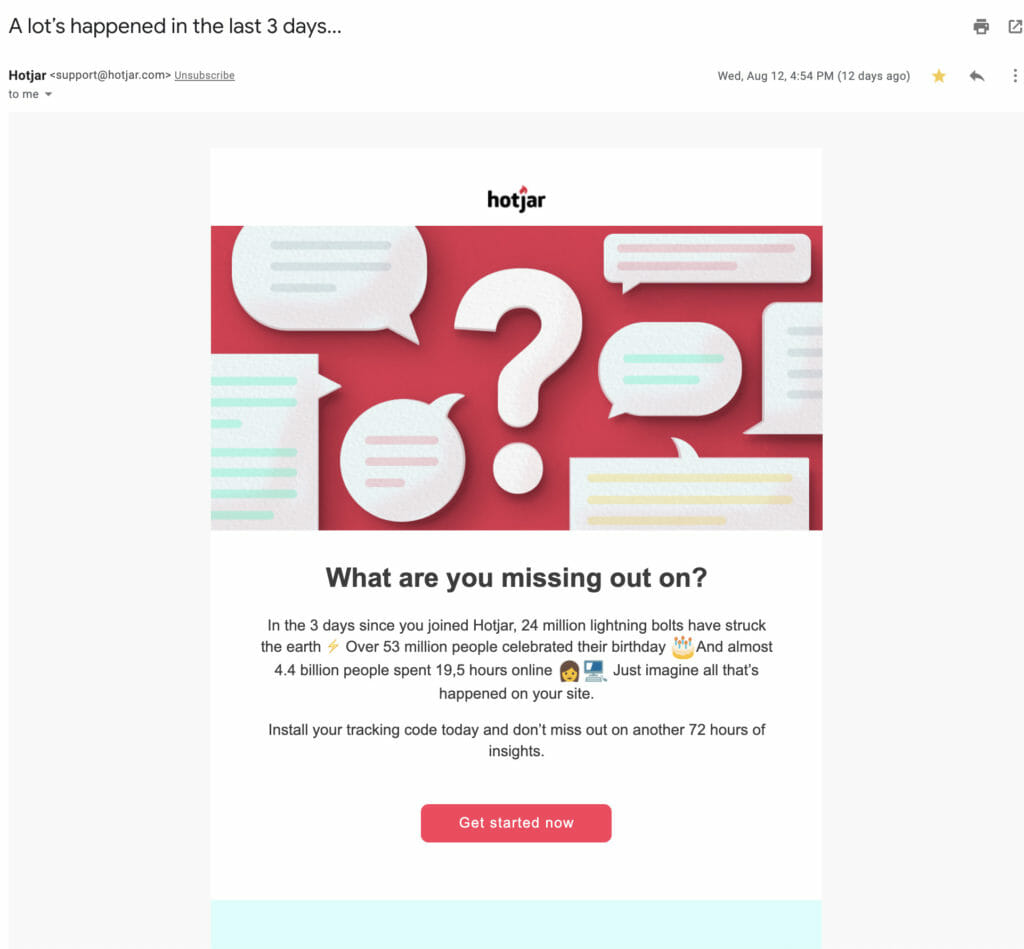
Common reasons for non-engagement
Not sure how to get started
This is why onboarding is so important. If your tool is too confusing or difficult to use, your trial users can struggle to get value. Highlight how to get started and where to go if more support is needed.
Just busy
Users may be too busy to engage with your trial. That’s okay. If you notice a user hasn’t engaged in a week, for example, you can add a re-engagement email to check in on them.
Not enough time
Someone signed up. Got busy—and didn’t start checking out your product until they got a “Your trial expires in…” email. It happens.
Consider extending a trial if user behavior suggests someone really did run out of time. But also know that others will try to milk the trial. Someone using your product daily for two weeks probably doesn’t need more time to see if it’s a fit.
6. Test to find the perfect trial length.
According to Chargify, “the most common ‘long’ SaaS trial length is 30 days […] any trial longer than 2 weeks falls under ‘long trial’ duration.” What works for “most companies” might not work for you.
CXL Institute is a good example. We’re a knowledge product, so a long trial risks letting someone come in, binge everything they want, and leave (for free).
Testing a variety of trial lengths can help you get a better picture of what makes sense. Chanel Clark, from Villio, found that 30 days was optimal for them:
We found the setup process can take a while for those that aren’t on top of it right away. For businesses who also might not already have a reception area but are getting our product to implement one, that delays the process too.
Steli Efti from Close.io believes most Saas trials are too long. On the Close.io blog, he shared the following when asked about the optimal trial length.
Short.
Probably shorter than you feel comfortable with. Many founders worry, and with good reason, people won’t convert after a short trial. There’s an overwhelming likelihood of rejection, and who doesn’t want to postpone rejection?In our experience, 99% of B2B SaaS products should limit the trial to 14 days, max […] “If you have salespeople, it’ll shorten your sales cycle. Shortening your sales cycle from, let’s say, six weeks to three weeks will reduce your CAC (customer acquisition cost) significantly.
If your product is technical or complex, you may need a longer trial. But know that a longer trial puts more strain on your customer service and sales team at the same time.
As Databox notes, “for self-service SaaS companies, signups is probably the most important metric,” but as your trial efforts mature, working to improve your LTV and customer retention numbers will ultimately help you get the most from your trials.”
7. Use value-based pricing.
Pricing for SaaS is tricky. Value-based pricing however helps establish your price based on how much your target thinks it’s worth.
As part of an effective value-based pricing strategy, spend time determining the actual price value of your product and communicate it to customers immediately—as soon as they land on the page.Tailor pricing to your product value and customers and reevaluate your pricing strategy at least annually (ideally, on a continual basis).
In addition, work to keep your pricing options simple. Aim to tie these three aspects of your pricing strategy together on your pricing page:
- Positioning that aligns with the right customers.
- Packaging that shows a mix of features based on customer needs.
- Price points that represent value and what your customers are willing to pay.
A higher price often requires a longer trial, either trial users want to feel more certain about their (big) decision or because complex products tend to be pricier, too, as Luis Camacho CEO, Fantôm of notes:
A complex product typically means your pricing will be higher as well, so it balances out the economics behind it…The inverse would be true for a shorter trial period if it’s a relatively simple problem you’re solving, then your trial should be relatively short, and the price of the solution won’t be as hefty, which balances out the economics as well.
Of course, with a good onboarding experience, they might decide to invest before the trial ends—the best-case scenario.
8. Decide whether requiring a credit card makes sense.
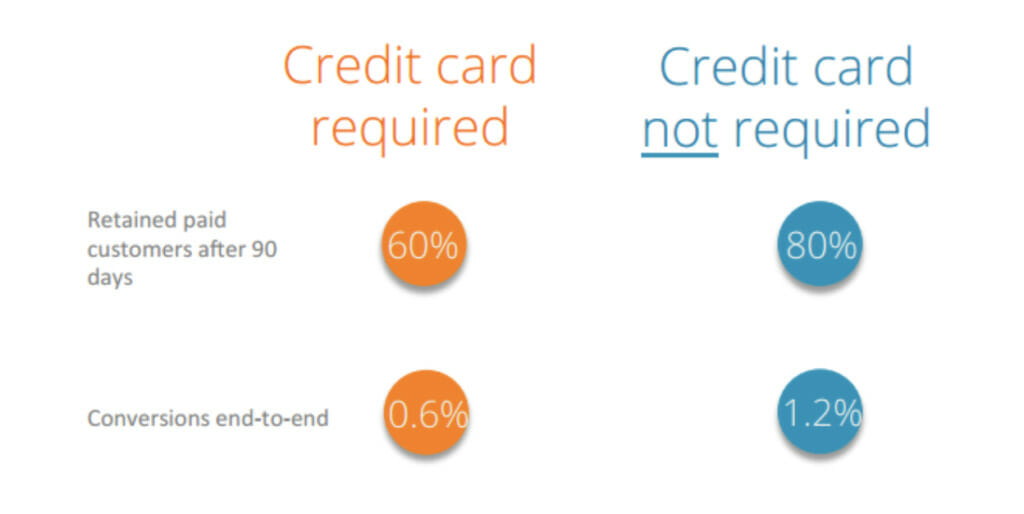
As with most things, there are pros and cons. At CXL Institute, Head of Growth Alex Atkins has seen the credit card requirement as a net positive:
Requiring a credit card at the trial start improves the quality of the trial audience. Charging a small trial fee elevates that status even more. It puts the prospective subscriber on the hook—forcing them to acknowledge the trial period and cost they will incur if they don’t cancel.
It also compels the growth team to provide immediate value to the subscriber. Fewer high-quality trials means more opportunity to personalize an excellent experience.
Justin Jackson, co-founder of Transistor.fm, also believes requiring a credit card can help improve buy-in from the start:
Having a credit card up front is helpful at the beginning because it makes your trials more meaningful. If people sign up with their credit card, it shows that there’s demand. They want what you have to sell (they’re not just kicking tires).
That said, not everyone agrees. Lincoln Murphy of Sixteen Ventures doesn’t believe the reduction of sign-ups is worth the cost in most cases:
The data I’ve seen shows asking for a Credit Card upfront causes fewer people to sign-up. Period. But I can anticipate one type of pushback already… sure, a CC-wall may not get more people in, but they’re the right people.
They aren’t the riffraff. They’re real, actual potential customers who are dedicated and not messing around.
Well, the ones that stick around past 30, or 60, or 90 days are I suppose. But the ones that don’t—they’re the riffraff with credit cards.
The reality is, CC or not; it’s what happens after the initial sign-up that matters. It’s what gets people to convert to paying customers. If you know this, you’ll see that a CC-wall isn’t the point.
Again, continue to experiment. If you’re getting a lot of sign-ups that aren’t converting, adding a little friction could be a worthwhile test. If you require a credit card but sign-ups are low, try getting rid of it.
9. Have a plan for when your trial ends.
Do your users lose complete access to the product? Are they downgraded to a free plan?
For example, SurveyMonkey has an “always free” plan that allows you to create unlimited surveys with limited functionality, and, after your trial, you’re automatically downgraded. Zapier also has a free plan that you can continue to use after your trial ends.
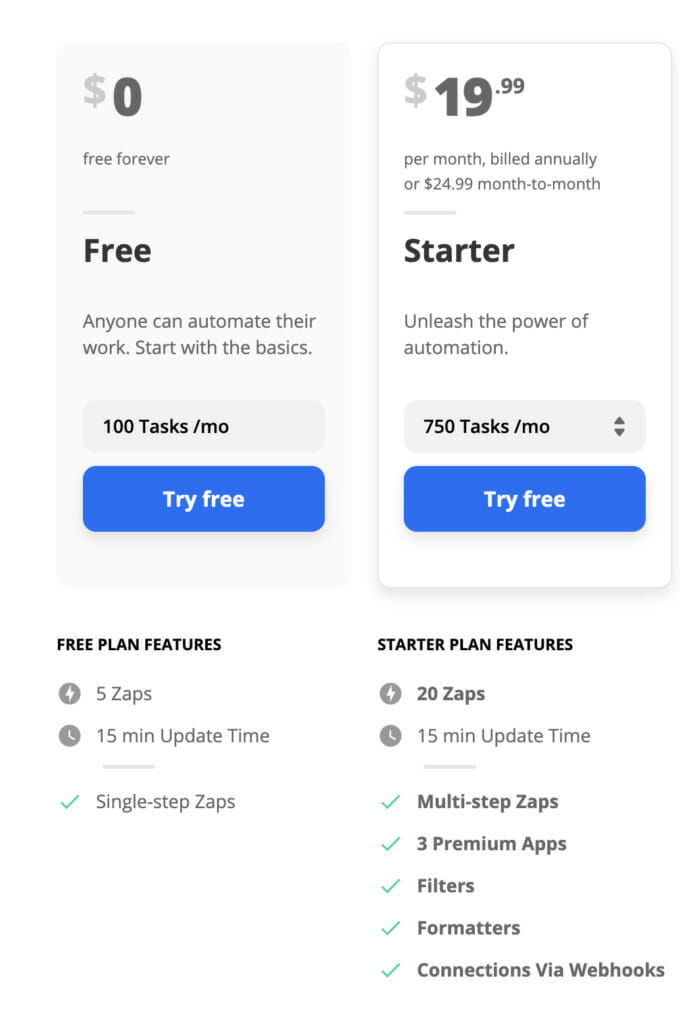
Conclusion
There are dozens of factors that go into creating a high converting SaaS trial. While these are just a few, they’re solid starting points for where to focus your time and attention:
- Make a strong first impression after sign-up.
- Keep your emails—especially subject lines and preheader text—engaging.
- Find out when and where strategic, personalized onboarding makes sense.
- For complex products, use onboarding to educate users.
- Engage the unengaged.
- Test to find the perfect trial length.
- Use value-based pricing.
- Decide whether requiring a credit card makes sense.
- Have a plan for when your trial ends.

